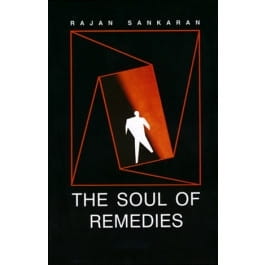The Soul of Remedies
One hundred well known homeopathic remedies are described in a clear and concise way. They are depicted with an emphasis of the inner state of the remedy / the patient. This book is a valuable complement to Sankaran’s main book “The Spirit of Homoeopathy”. In its exposition of remedies, it reminds us of the way Vithoulkas has conceived them, namely as 'essences‘.
This book is meant for those who have read 'The Spirit of Homoeopathy' and 'The Substance of Homoeopathy' because it is those earlier works that most fully express the authors understanding of Organon and Materia Medica; without understanding his ideas on such things as case-taking, classification of remedies according to Kingdom, miasms, etc, this book will not be of much benefit. This work may be used as an adjunct to the previous works but not as a substitute for them. The reader who attempts to use this book without understanding the fundamental concepts may easily find himself lost without a compass.
The authors idea of understanding a remedy is to grasp the connection that ties together its myriad symptoms: the basic delusion, its source (Kingdom), the miasm to which it belongs, its symptoms; all must be understood as aspects of a single whole if we are to even begin to truly understand a remedy. It is the authors attempt to trace out these connections that distinguishes this work from other Materia Medicas.
The material presented here has been observed and confirmed in Dr Sankarans' own practice, it is a material of which he is sure. He has not included remedies of which he has little experience or knowledge. Dr Sankaran has attempted to convey the innermost feeling or the basic delusion of the remedy while connecting the situation, source, miasm and kingdom. The rubrics and physical symptoms cited are ones which he has repeatedly observed and often used to confirm the remedy prescribed.
There is a misconception to the effect that Dr Sankaran stresses mental and emotional symptoms to the exclusion of physical symptoms. This is a MISCONCEPTION. If he often seems to speak exclusively of mental/emotional state, it is because understanding this requires some insight into the patient as well as the remedy and it is more difficult than noting physical symptoms. Nonetheless in practice, he gives a lot of importance to the physical symptoms, to the meaning of pathology and to the modalities which have to be matched with those of the remedy. Giving a remedy solely on a vague idea of mental picture is prescription for failure. Such an approach is risky and certainly not the one he recommends or follows.
- Author: Rajan Sankaran
- ISBN: 9788190081023
- 236 pages
- Paperback
- Printed in India (so could be of inferior quality)

